As anyone who has been there will tell you, it’s virtually impossible to see everything that Vienna offers in only two days. But if you only have a limited time, or maybe are visiting the city as part of a river cruise on the Danube like Henk and I were, you still can make the most of your time here and see a lot of Vienna’s most beautiful sights without necessarily feeling rushed. Here are our recommendations for what to see in Vienna in 2 days.
Palaces, Palaces, Palaces!
The Best Ones to Visit With Only 2 Days in Vienna
Vienna is a city of palaces, having been the seat of the Austro-Hungarian empire for about six centuries. So you can’t visit the city without seeing some of these baroque beauties. I would recommend you visit these two palaces described below and only visit one each day so you don’t get ‘palaced-out’.
1. Schönbrunn Palace
Schönbrunn Palace has been the site of numerous Royal residences since the 14th century when it came into Emperor Matthias’ possession and he discovered a spring on the estate that gave the property its name. (“Schönbrunn” means beautiful spring in German).
But it was in the mid 1700s during the reign of Empress Maria Theresa that the biggest expansion and renovations took place that resulted in a palace grand and stately enough to become the Royal Family’s summer residence. Built to rival the palace at Versailles, Schönbrunn fell a little shy with only 1440 rooms, (there are 2300 rooms at Versailles today), but it was more than grand enough to accommodate the Royal Family, including Marie Antoinette and her 15 siblings.
It’s no wonder that Versailles seemed like home to Marie when she became Queen of France at age 19: she had grown accustomed to ‘living large’ her entire life!
Equally grand are Schönbrunn’s massive gardens that stretch over 2 square kilometres and include the manicured Great Parterre main garden, a zoo, a maze, the Privy Garden on the east side, fountains, statues and much, much more. At the far end of the Palace’s main garden is the arched Gloriette, built on the crest of a hill and overlooking the entire grounds.
TIP: It takes at least 15 minutes just to walk one-way up to the Gloriette from the palace, (although there’s not much to see there other than a cafe). So you’ll want to allow yourself at least an hour if you want to see even a portion of Schönbrunn Palace’s gardens.
Inside Schönbrunn
The interior of Schonbrunn is about as over the top as you would expect from Baroque and Rococco architecture: chandeliers and gilding, sumptuous fabrics and wallpapers, and what is known as the Millions Room, the most expensive in the palace rumoured to have cost the Empress one million silver coins. Inlaid with exotic rosewood, the walls are covered floor-to-ceiling with Mogul scenes and miniatures framed in curlicued-shaped cartouches with gold frames.
One of my favourite rooms in the palace was the Porcelain room, (also the Empress’ favourite) whose walls are decorated with 3-dimensional motifs that are carved and painted to look like blue and white porcelain. There are also dozens of framed blue and white gouache paintings done in the popular Asian style of the day. What is impressive is that some of these paintings, which were copies of French originals, were done by Empress Maria Theresa’s children – and these aren’t stick figure drawings stuck on the fridge. These kids were seriously talented!
TIP: There is absolutely no photography allowed inside Schönbrunn Palace, so be sure to really drink it all in on your tour.
2. The Belvedere Palace
Belvedere Palace began its life as the summer residence of Prince Eugene of Savoy, who commissioned the construction of the complex in the mid 18th century. It included an Upper Palace, Lower Palace (where the Prince’s apartments were), the Orangery, and the Stables. But after Prince Eugene’s death, Empress Maria Theresa turned the Upper Belvedere into the world’s first public museum, by installing the Imperial Picture Gallery in the palace’s rooms and opening it to the public in 1781.
Today all the buildings function as museums, but the most visited is still the Upper Belvedere, which houses over 18,000 works of art, including the largest collection of Gustav Klimt paintings in the world.
Make Time for a Special Kiss
On my first visit to Vienna thirty years ago, I was disappointed that I hadn’t seen any of Gustav Klimt’s paintings, as I have always been a huge fan. So it was a special treat to finally get to the Belvedere to see his works as part of an exclusive event with Crystal River Cruises. Most people will recognize one of Klimt’s most popularized works, The Kiss, which is a showpiece of the collection and makes this museum a must-see for many visitors, even if they have just 2 days in Vienna.
But Belvedere Palace itself is beautiful in its own right, both inside and out and has been used for important historical events for centuries, including the celebration in 1770 of Marie Antoinette’s wedding to the future King Louis XVI of France. One of the most beautiful rooms inside the palace is the Marble Hall which is still used today for special events.
TIP: Take some time to stroll the formal gardens between the Upper and Lower Belvedere palaces. There is a cascading fountain halfway between – and the grounds are much more manageable for a short stroll than Schönbrunn Palace.
GETTING THERE: The Belvedere Palace is a little outside of the historical centre and Schönbrunn Palace is a fair distance away, so to save time – and your feet – take a taxi or Uber. There is, however, a Metro stop just outside the entrance to Schönbrunn which may be the fastest route to that palace during rush hours.
What to See in Vienna’s Historic Centre
The historic centre of Vienna is relatively compact, at the centre of which is the city’s most important church, St. Stephen’s Cathedral, and most important secular building, the Hofbug Palace (and former Imperial Residence). There are also many of the city’s best museums clustered nearby and all within walking distance of each other. So put on your most comfortable shoes and get ready to explore.
Visit St. Stephen’s Cathedral
Right in the heart of downtown Vienna is St. Stephen’s Cathedral, which has been the religious heart of the city since 1137. The cathedral is impressive, imposing and impossible to ignore if you are visiting Vienna, even if all you do is walk through the interior to admire its high vaulted ceilings, checkerboard floor, detailed pulpit and sculptural details.
Henk and I chose to climb up the medieval South Tower of the Cathedral too, as we wanted to see the views of the city from above, which was well worth the 5 euro charge and the climb up the 343 steps.
TIP: If you want to climb the tower, go first thing in the morning when there are fewer people, as the staircase is narrow and is shared by both the ascending and descending visitors.
Walk Graben Street and the Pedestrian Quarter
Adjacent to St. Stephens is Vienna’s downtown pedestrian quarter, the centrepiece of which is Graben Street. This is a great area to join locals and do a little window shopping as the street is home to many international brands of clothing, footwear and jewellery.
Or you can just admire the architecture (always look up to see some of the amazing details), and the city’s famous Pestsäule (Plague Column), a carved marble sculpture built to commemorate the Great Plague of 1679 that decimated the city.
Keep an eye out for the cafes and pastry shops as you will want to stop in and sample a sweet Viennese treat like the famous Sacher Torte (a chocolate cake with apricot jam between layers).
Demel on Kohlmarkt Street is one of the most famous cafes known for their savoury delicacies, pastries and chocolates, but there are plenty of small cafes that have their own authentic specialties that aren’t as busy.
TIP: Kohlmarkt street leads to the Hofburg Palace and is lit up at night with overhead twinkle lights, making it an even prettier stroll, and at Christmas the whole area gets really decked out.
For Horse Lovers: the Spanish Riding School at the Hofburg Imperial Palace
If you haven’t had enough of palaces, (and really, can you get enough of palaces?), you can always add the Hofburg Palace to this list as it is right at the end of the pedestrian quarter’s Kohlmarkt Street. The palace was, after all, the Imperial Residence of the Hapsburgs for 600 years and there are tours that will show off some of these rooms.
With our 2 days in Vienna, Henk and I opted instead to do something different and see the part of the palace that houses the Spanish Riding School, known around the world for the beautiful and acrobatic Lipizzan stallions that perform here.
The Spanish Riding School has been an institution in Vienna for almost as long as the Hapsburgs themselves (450 years), and has been designated one of UNESCO’s world cultural heritages. The snow white Lipizzaners are legendary and the horses and their riders train for between 10 and 14 years in order to execute the soaring leaps, jumps and precise dressage for which they are famous. (see some examples of these on this video from a PBS special.)
Most performances take place on weekends, but unfortunately Henk and I were visiting Vienna during the week so we weren’t able to see one. However, we were able to buy tickets to watch these horses and their riders go through their morning training exercises in the beautiful arena, which was worth it just to see a glimpse of this Viennese tradition. (Next time I visit Vienna, I will plan to see one of these performances for sure.)
TIP: Tickets to the training sessions cost about 15 euros but remember this is not a performance; however, if you are really lucky they may practice a jump – although this is rare.
Pick a Museum, Any Museum in the Museum Quarter
On the other side of the Hofburg Palace gardens is Vienna’s Museum Quarter, which offers just about every type of museum you might want to visit, whether you love fine art or natural history. In fact, Vienna’s Kunsthistorisches Fine Art Museum and the Museum of Natural History are 19th century architectural ‘twins’ that flank the square known as Maria-Theresian-Platz. So if you can’t both agree on which museum to visit on your 2 days in Vienna, it’s easy to split up, visit the one you prefer and meet in the middle at the monument!
Or you can continue past both of these, walk a little farther and visit one of the more contemporary museums like the MUMOK or the Leopold Museum which also has Gustav Klimt works. (On the way you might even encounter some unusual Lipizzan-headed buskers, like Henk and I did! Have a listen.)
Go Off the Beaten Path to Discover Hundertwasser
If you love the decorative embellishments and graphics of Gustav Klimt’s paintings, or Antoni Gaudi’s mosaic work and architecture, chances are you’ll love the colourful, organic style of another Austrian-born artist, Friendensreich Hundertwasser.
Hundertwasser wasn’t a contemporary of Klimt, as he was born in 1928, ten years after Klimt’s death, but he obviously grew up surrounded by that legacy of Viennese Secessionism and that movement’s rejection of traditional artistic conventions. Hundertwasser embraced this concept in all his works but particularly in architecture – something that became immediately apparent to me when I stumbled onto Hundertwasser Village, an apartment block that he conceptualized and co-created with Joseph Krawina in 1985.
Nothing about Hundertwasser Village follows the ‘accepted norm’ in architecture, from the undulating cobblestoned sidewalks in front of it that rise and fall below your feet to the top of the crayon-coloured facade with its wavy lines and integrated cubby holes where ‘tree tenants’ spill outside the walls. It’s the kind of building that is just pure fun to look at.
And I absolutely loved it.
Now smitten with Hundertwasser’s style, I dragged Henk off to see another one of his buildings nearby, the KunstHausWien museum that houses contemporary photography exhibits as well as the largest collection of Hundertwasser’s artwork. Inside and out, this building charmed me, especially after I discovered its secluded courtyard cafe where we stopped to sit, enjoy some Sacher Torte, and just admire the building.
Just when I thought I had pigeon-holed Vienna as a Baroque beauty, I had discovered this surprising, rule-breaking contemporary architecture – who knew?
GETTING THERE: Hundertwasser Village and the KunstHausWien are close to each other, but it’s best to get there by taxi or Uber as they are a fair distance from the centre of Vienna.
Music is a Must-Do in Vienna
Vienna is the City of Music and home to Mozart, Schubert, Beethoven, Mahler and Brahms, to name just a few of the musicians and composers who made their name here. It’s also the home of the most famous boy band in the world: the Vienna Boys Choir. So you shouldn’t come to Vienna without taking in some kind of musical performance.
Whether you like classical music, opera, choral ensembles or contemporary music, Vienna has something going on every day and night of the year it seems, so even with just 48 hours in Vienna, you should make a musical performance part of your “what to see in Vienna in 2 days” itinerary.
Henk and I were lucky to experience an exclusive musical performance at the Belvedere Palace, one of the Signature Events offered on our Crystal River Cruise, and it was a highlight of our visit to Vienna. The concertmaster was Tanja Seara Sallustio, who leads the Schönbrunn Palace Chamber Orchestra that performs at the historic Orangerie at Schönbrunn Palace. This is a great option to consider if you are visiting Vienna from November to March as visitors can experience classical music within a beautiful venue similar to our Belvedere evening.
TIP: Avoid buying tickets to musical performances or events from street vendors. The best place to purchase tickets is at the box office of the venue itself, or at authorized sellers that you can find on the official Vienna tourism website.
Listen to the Bells at Karlkirche
It may not be on everyone’s top ten lists of ‘what to see in Vienna in 2 days’, but Henk and I decided to end our visit to the city by plunking ourselves in front of St. Charles Church (Karlkirche). We had gone there at dusk hoping to take a photo of the church reflected in its oval pond, but unfortunately, the water had already been drained in preparation for winter.
None of this mattered to us, however, because after two days of exploring Vienna, we were happy to just share a bench, chat a little with some local residents and listen to the sound of the church bells as the sky turned to evening blue behind the church’s beautiful dome and stately carved columns.
After a busy couple of days exploring the wealth of attractions in Vienna, a peaceful plaza filled with the sound of bells was music to our ears.
And our feet.
Special thanks to Crystal River Cruises who hosted Henk and I on a Danube cruise that took us to Vienna, Austria. All opinions and descriptions in this post are our own and reflect our genuine experiences.

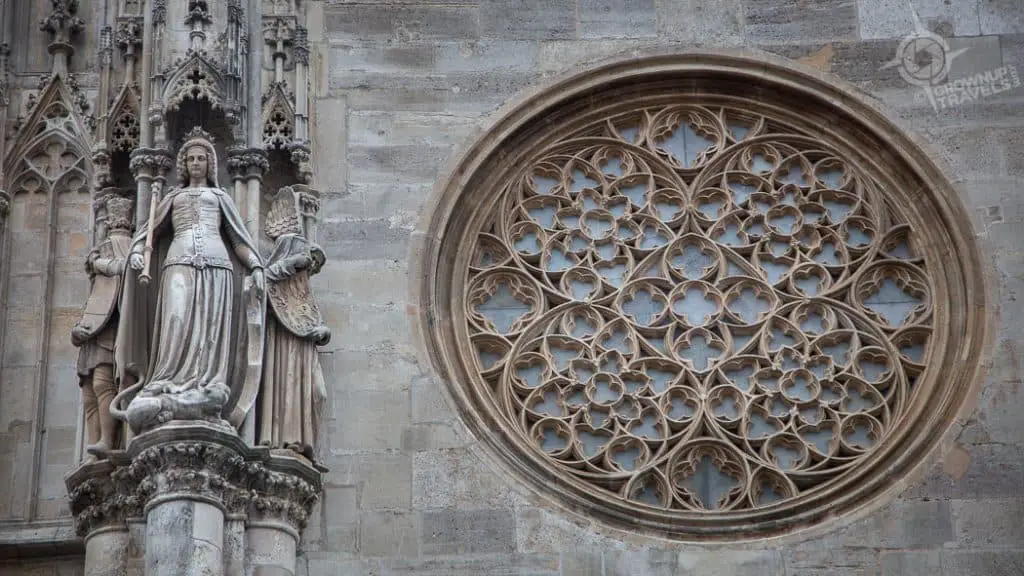
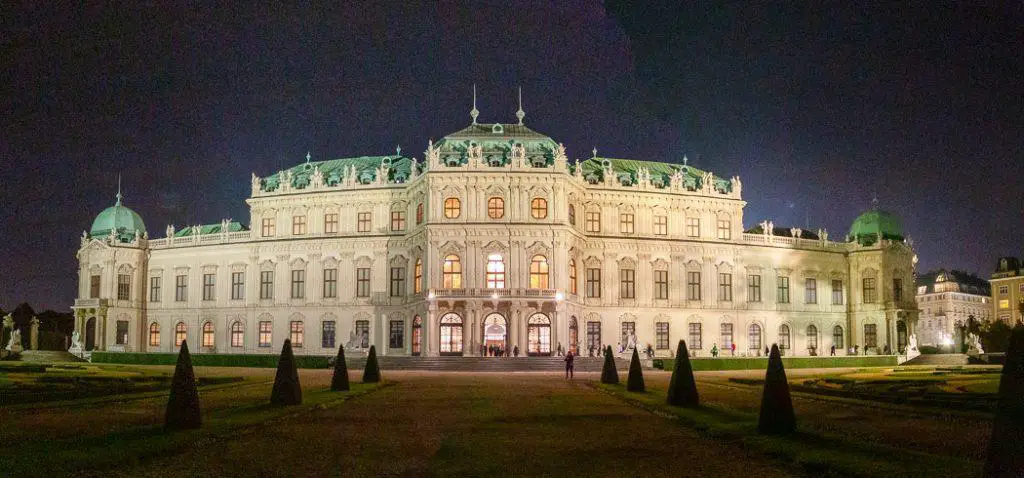
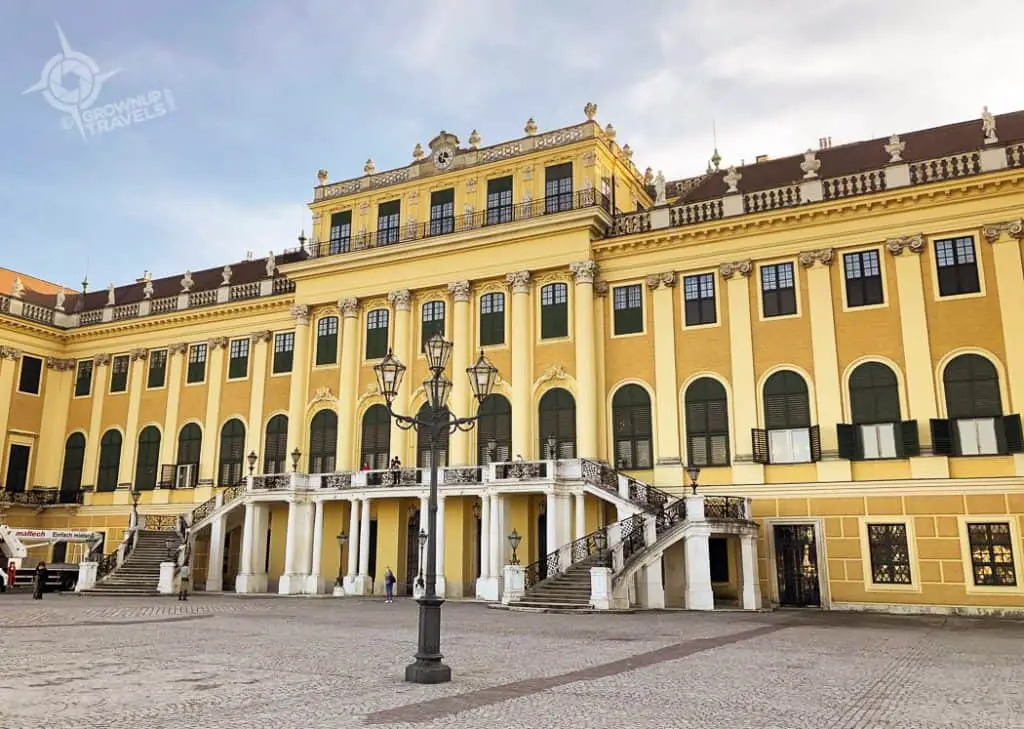
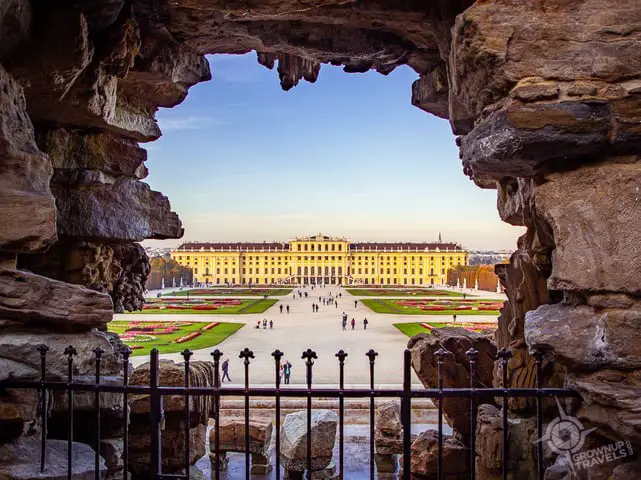
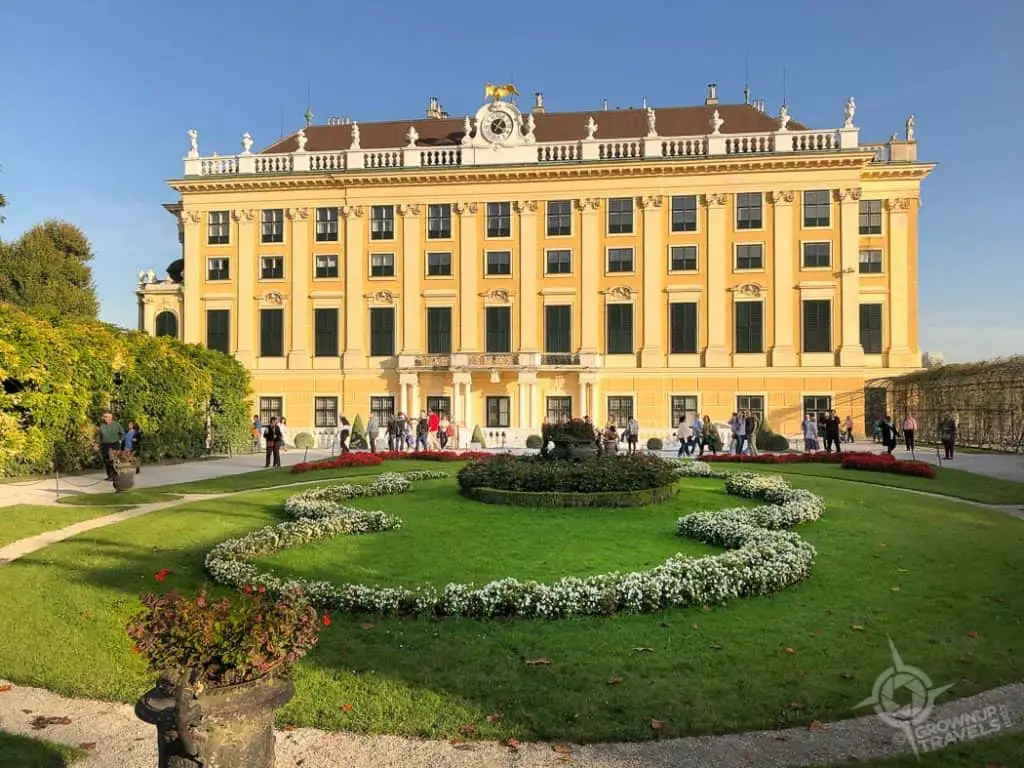
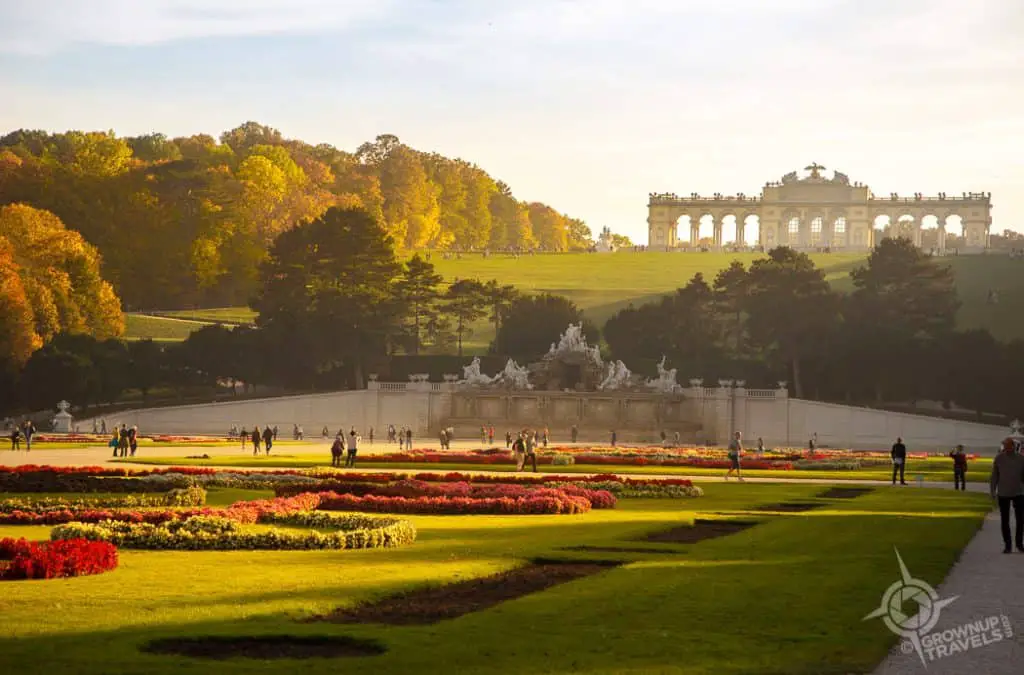
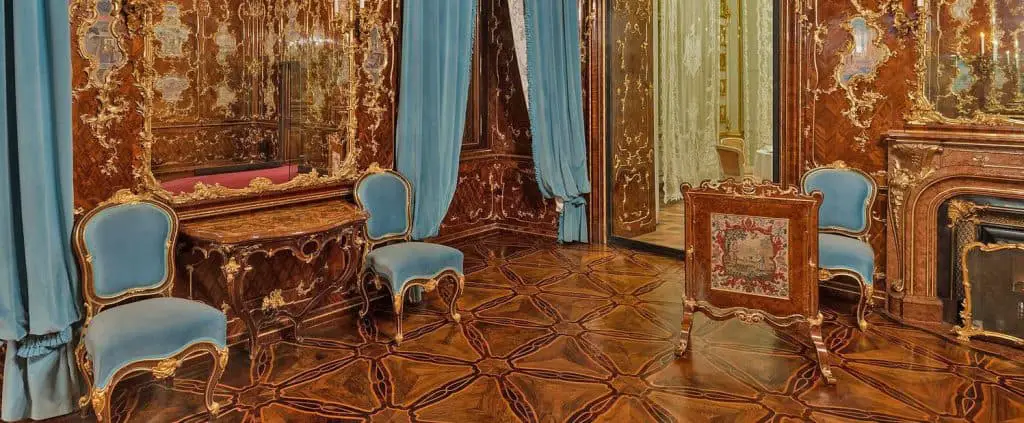
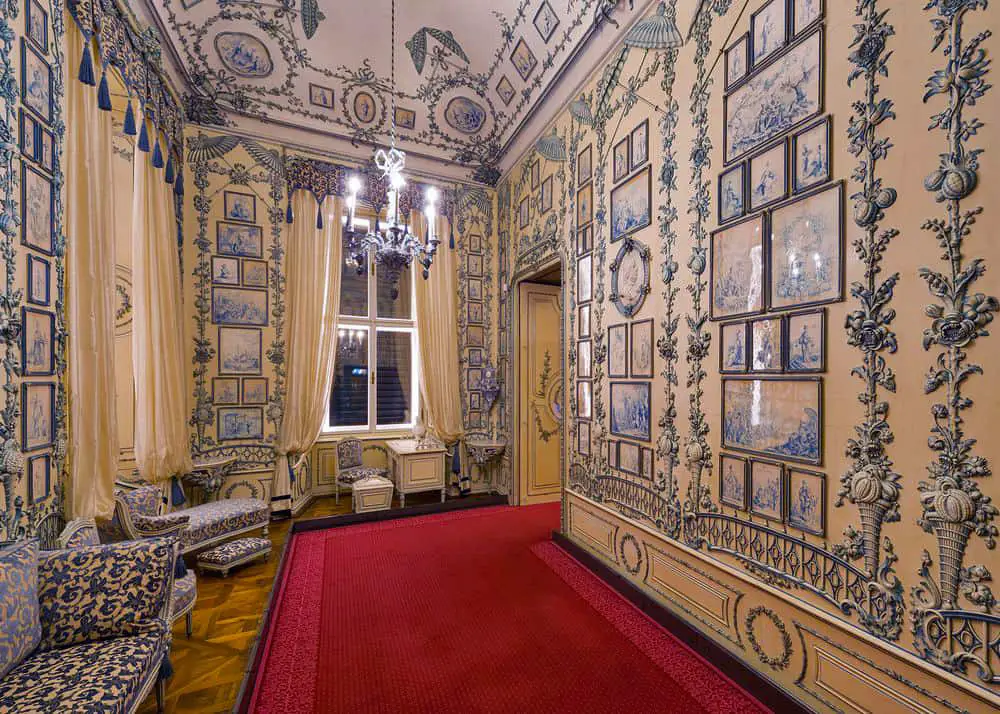
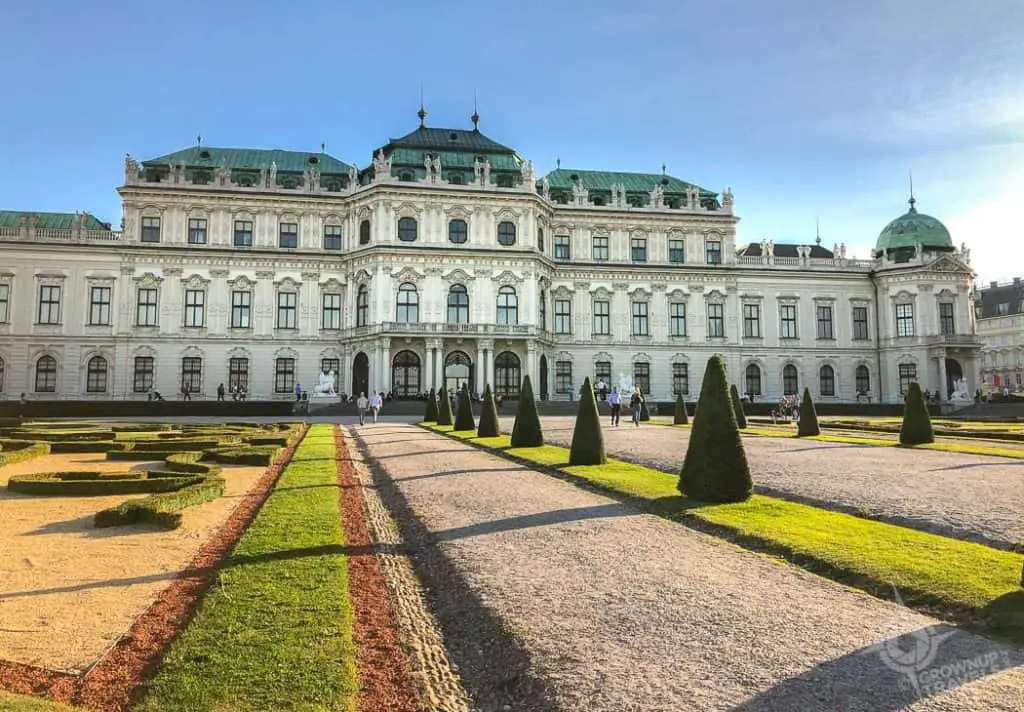
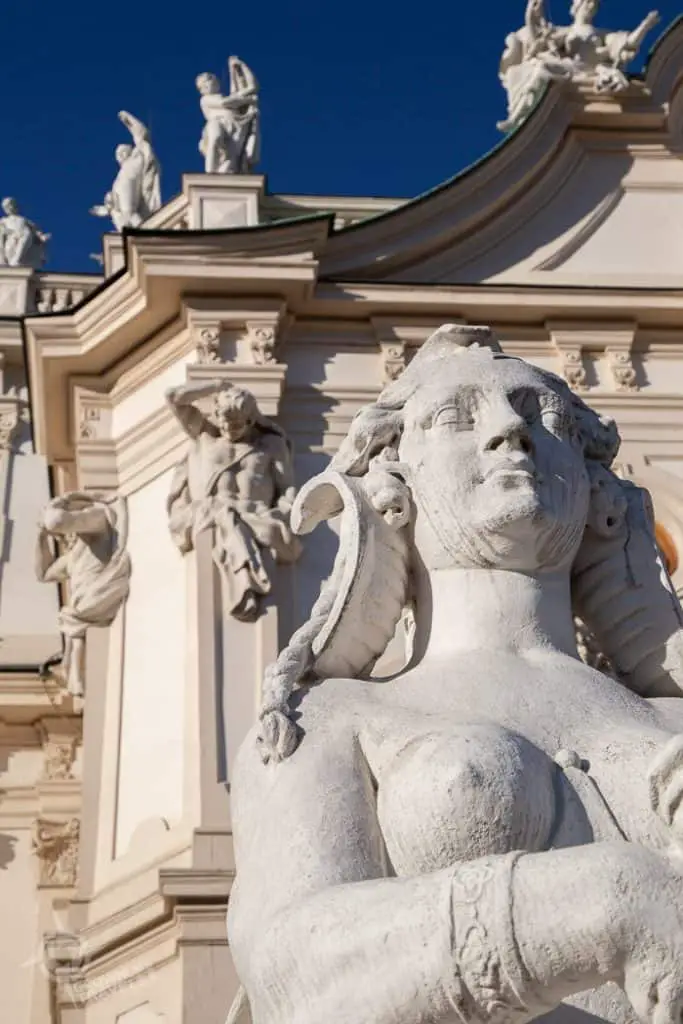
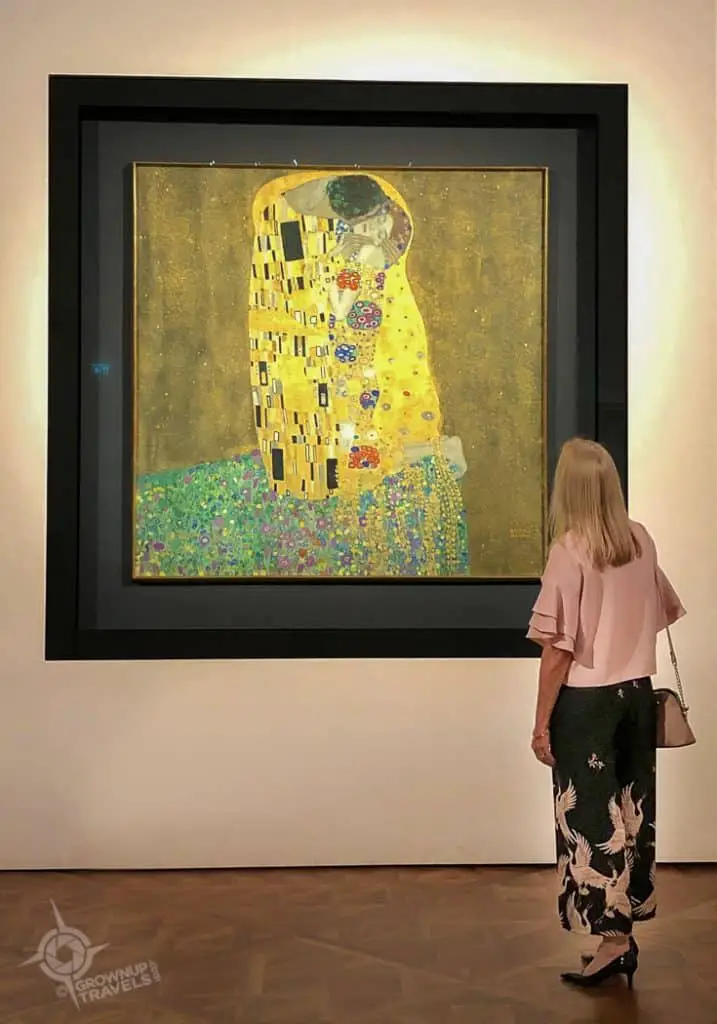
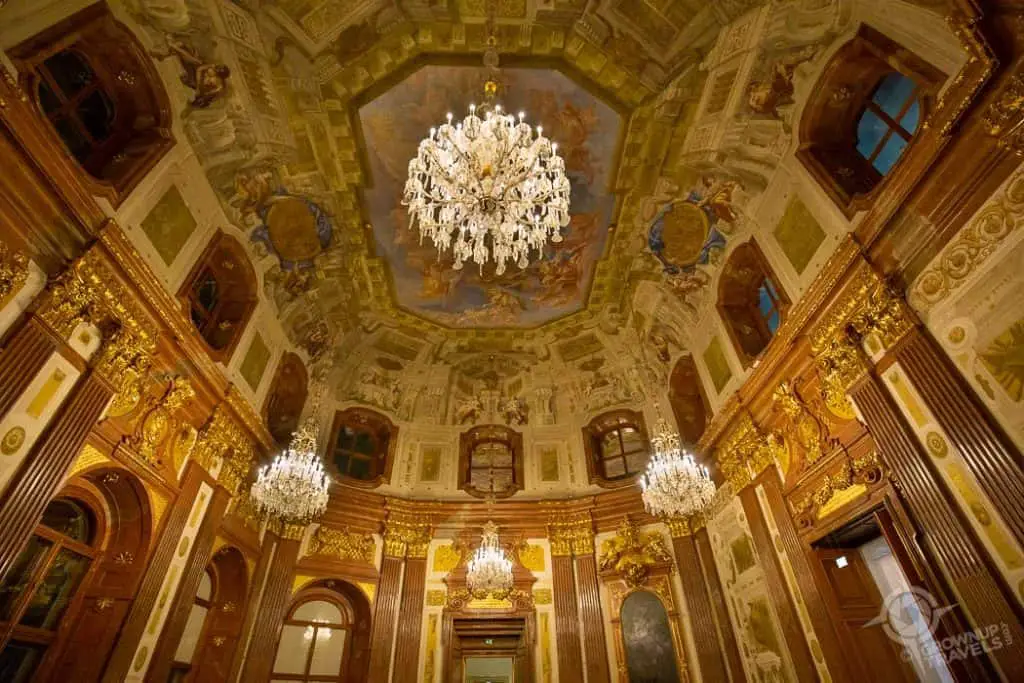
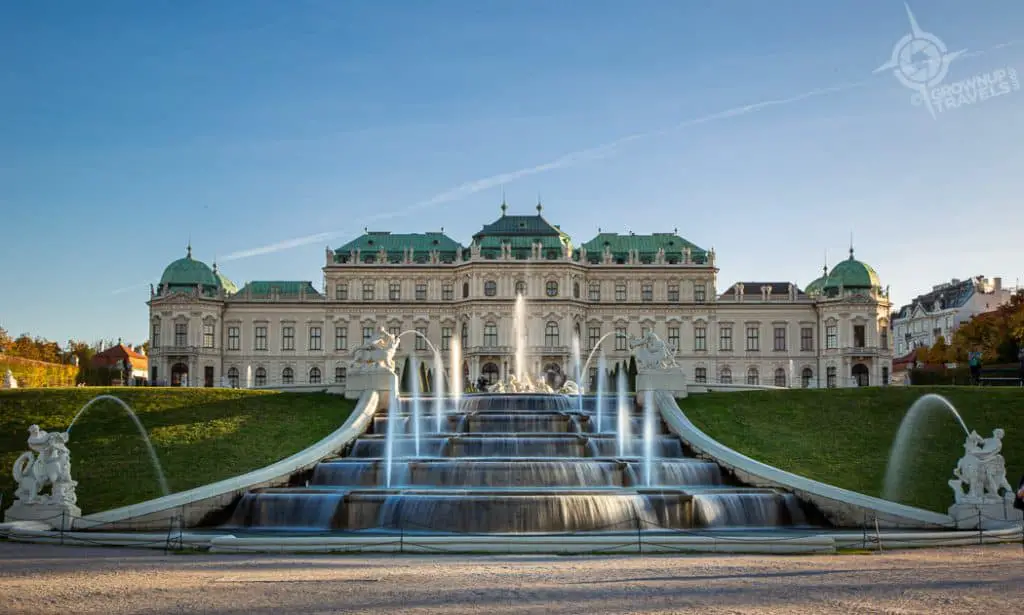
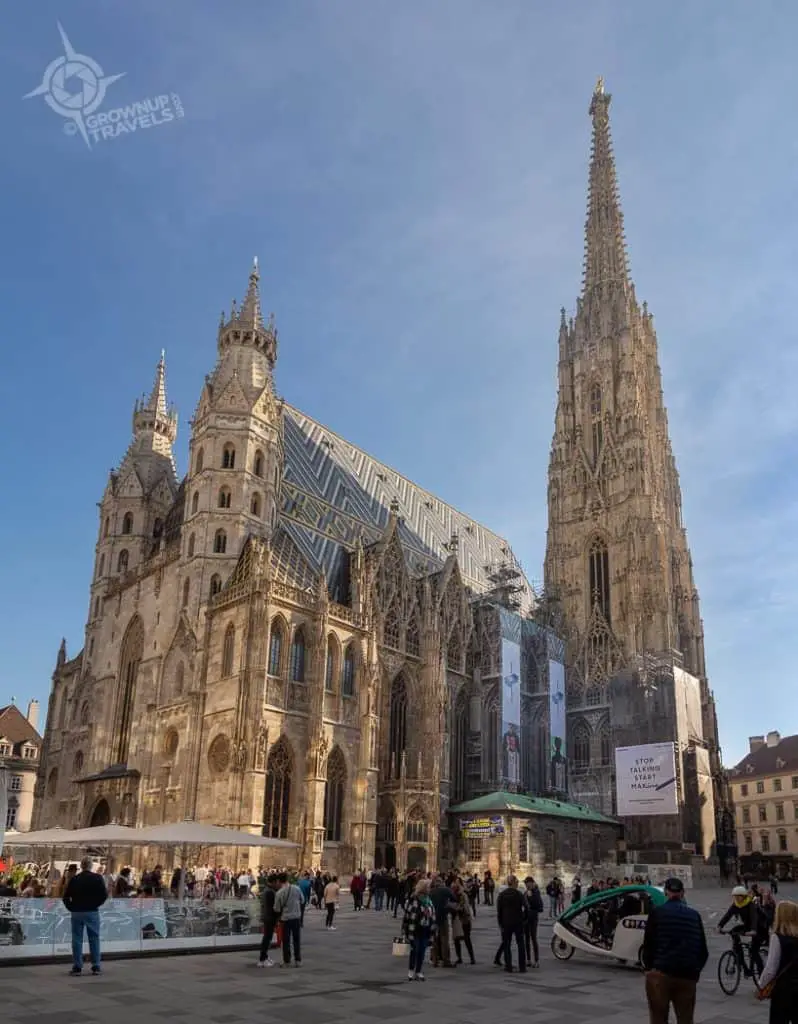
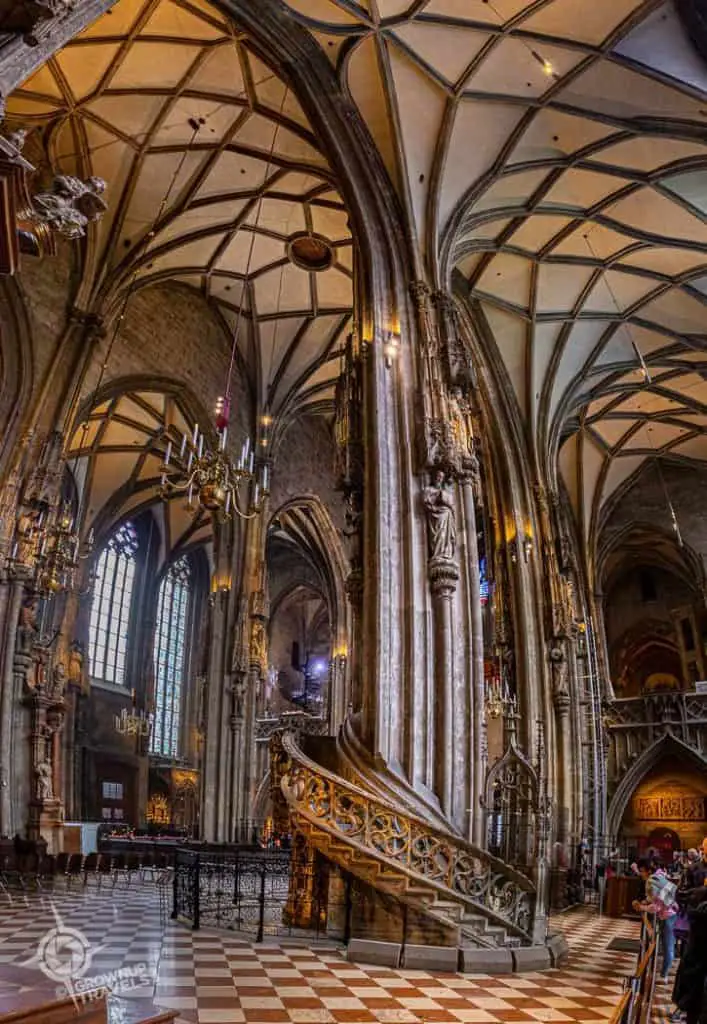
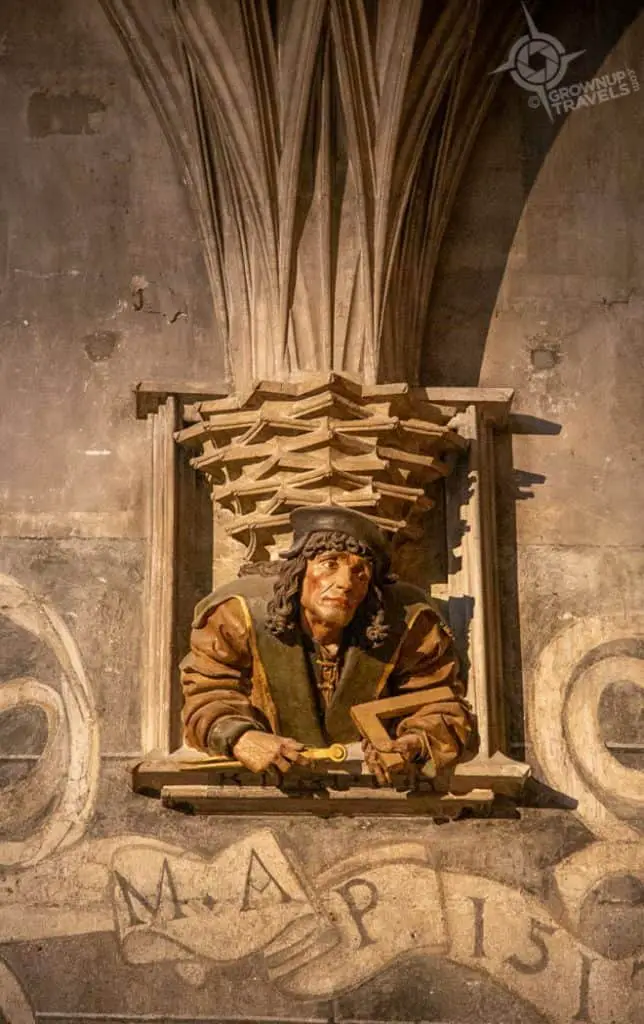
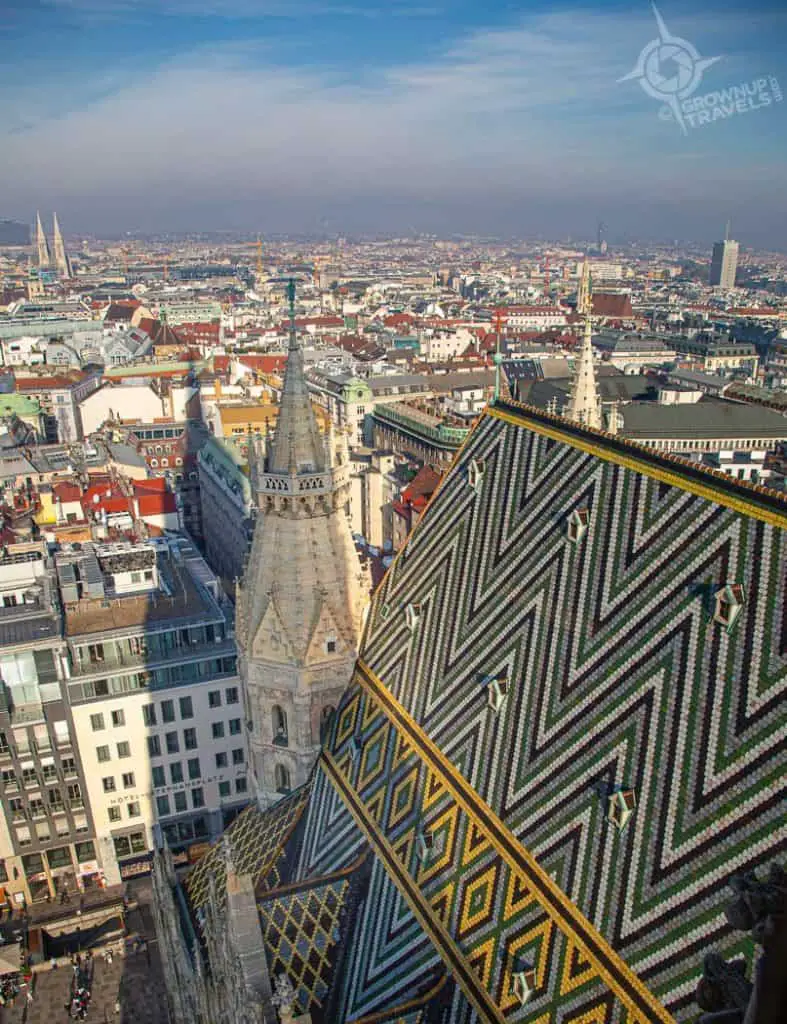
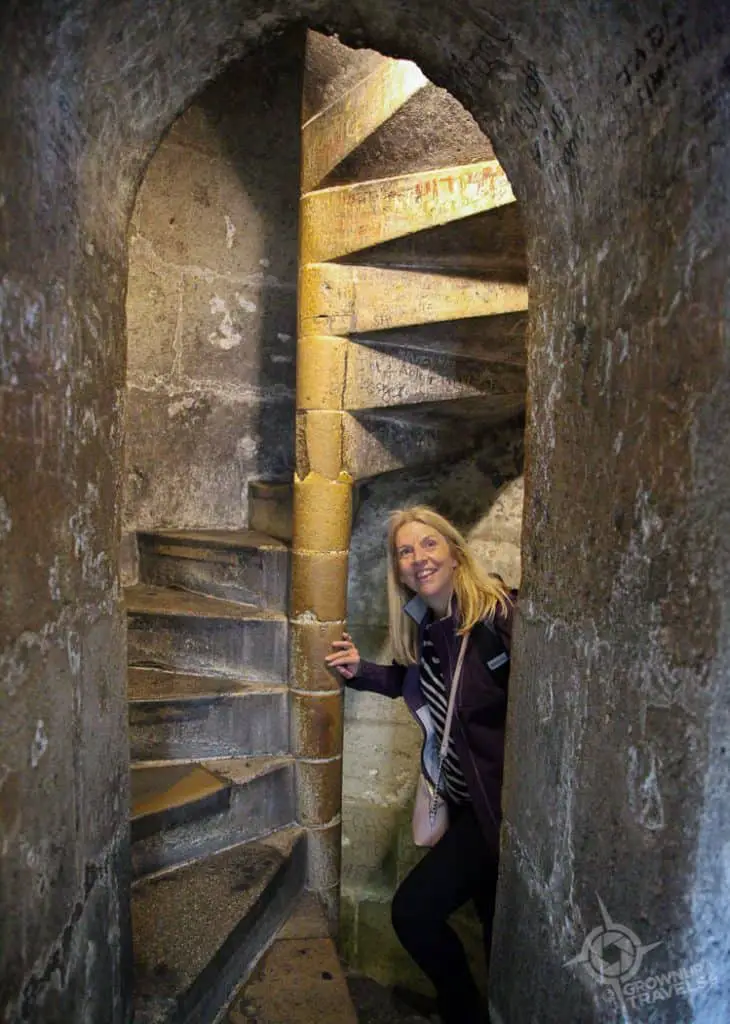
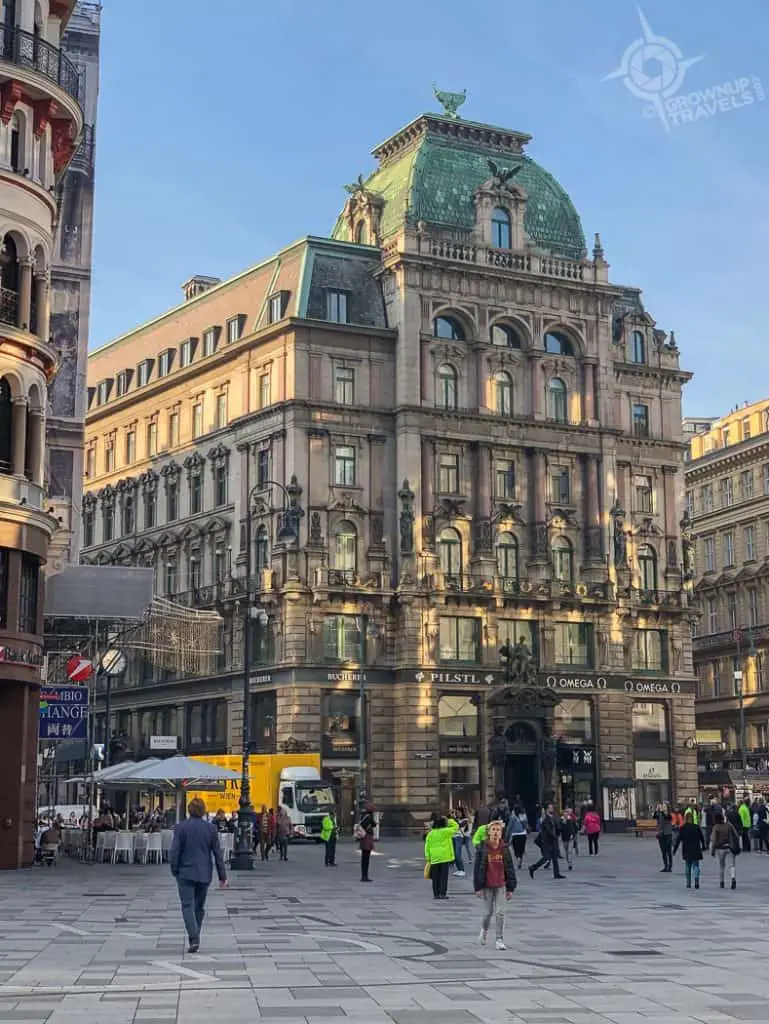
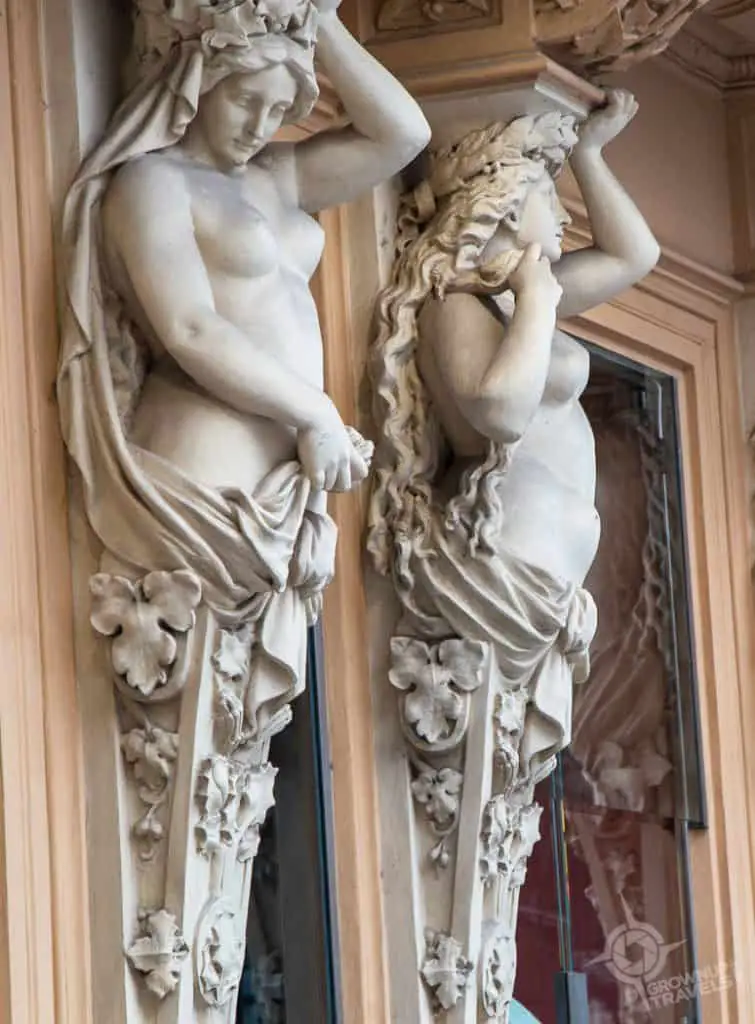
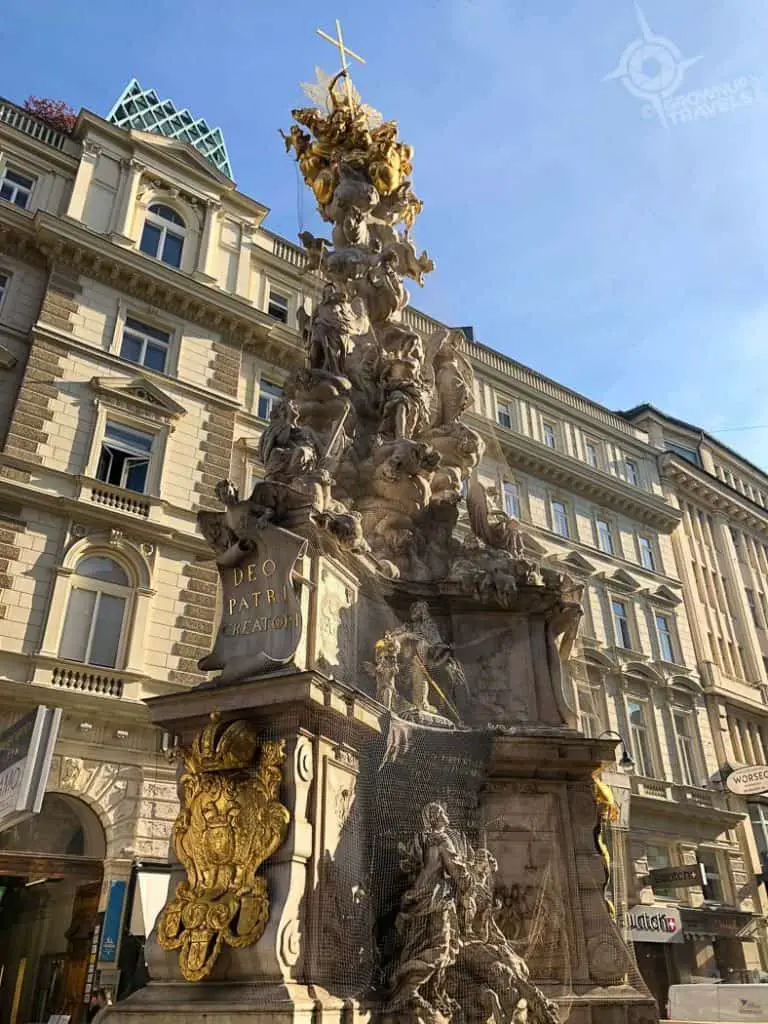
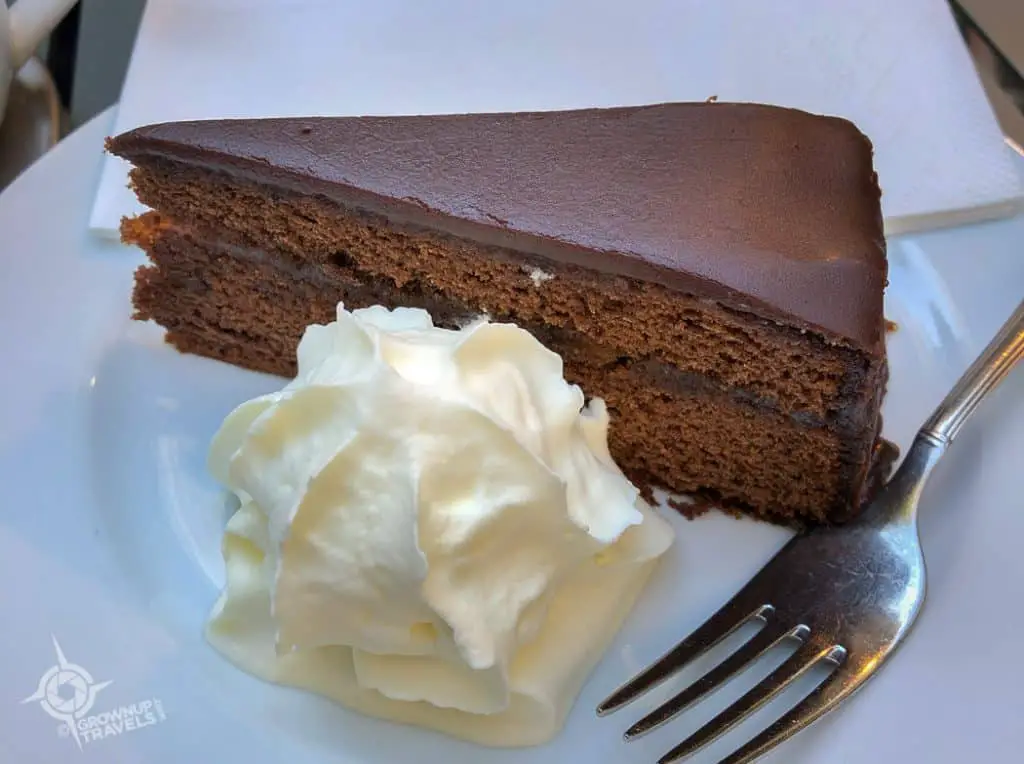
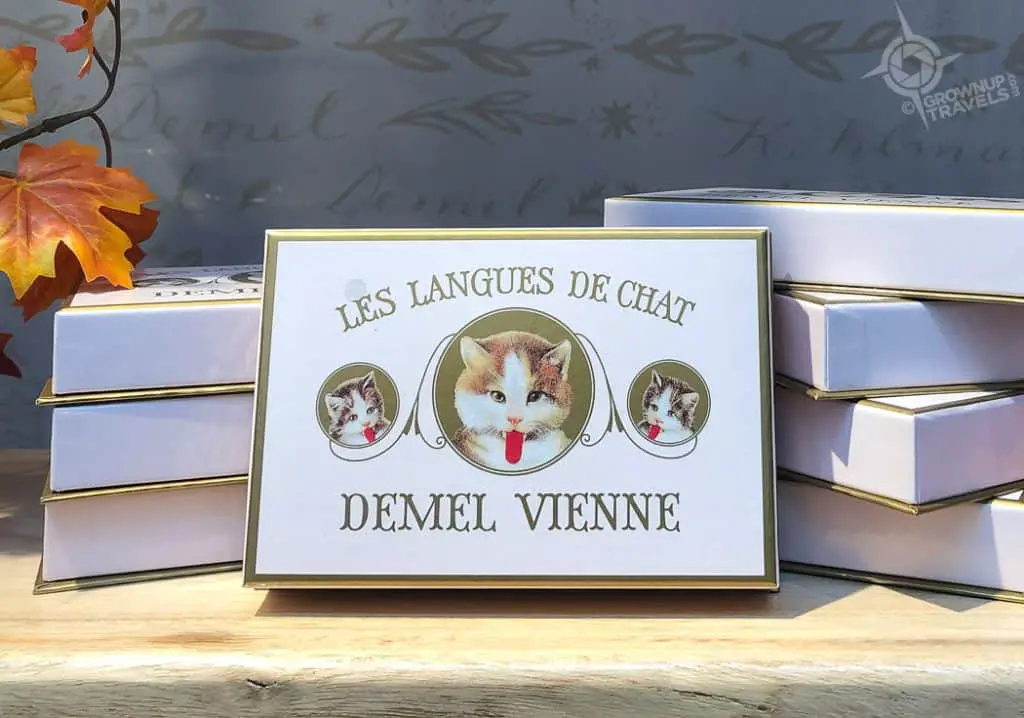
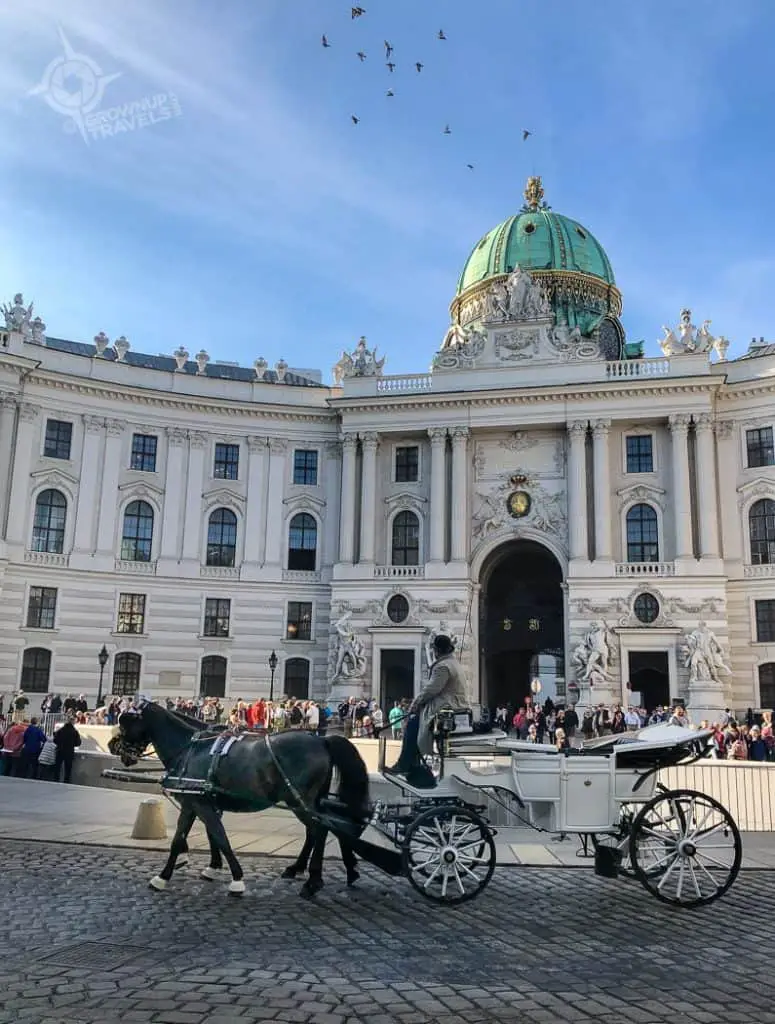
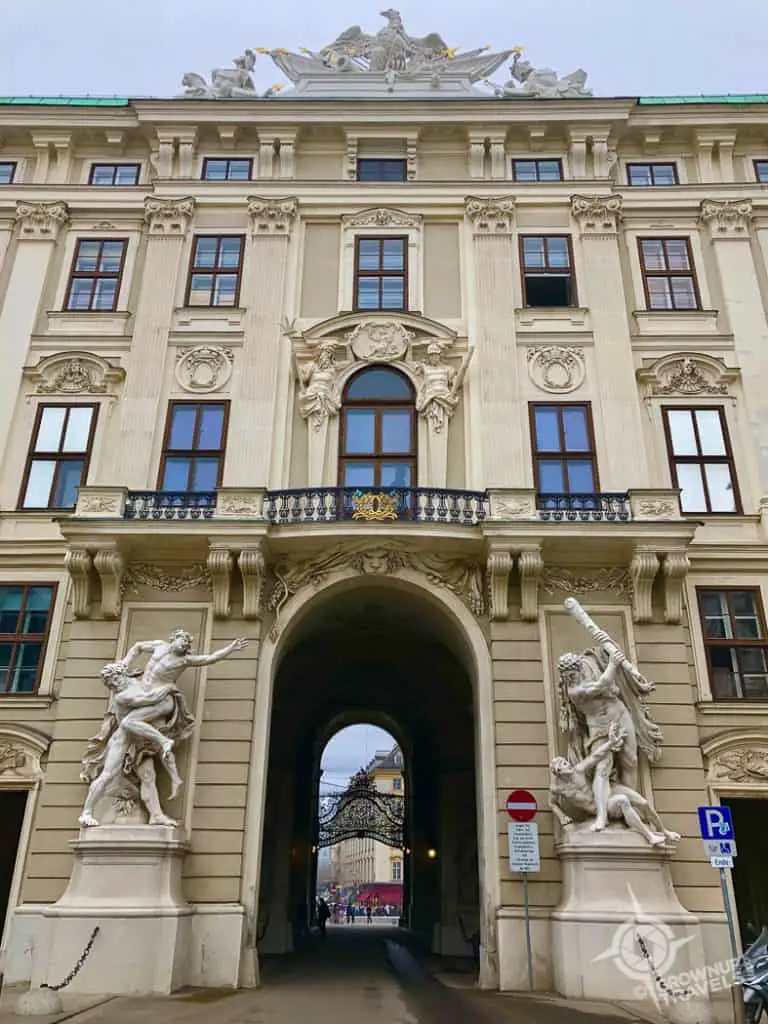
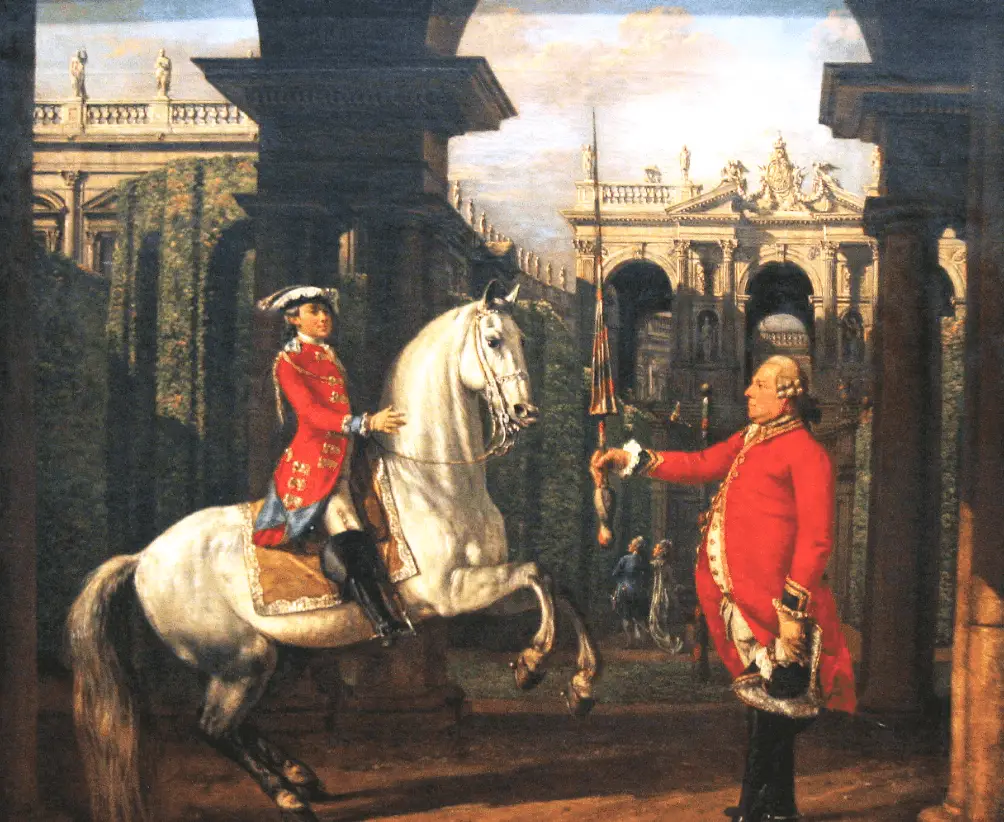
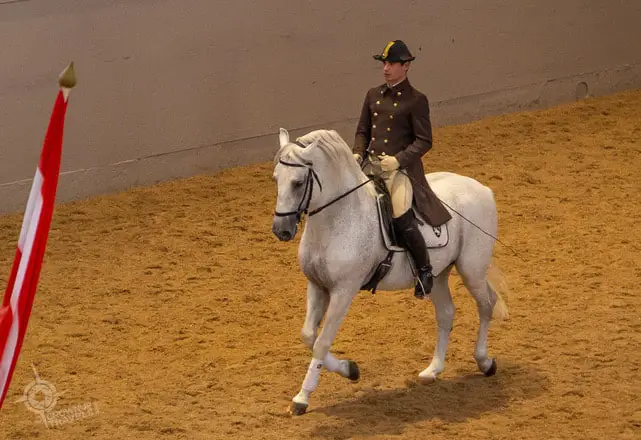
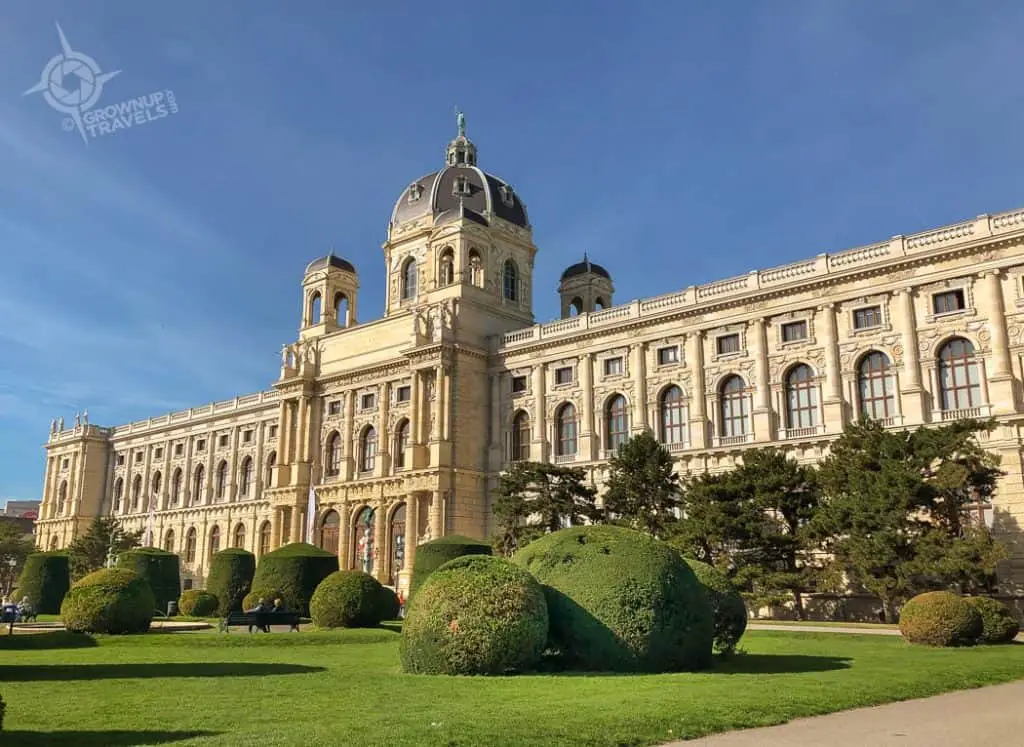
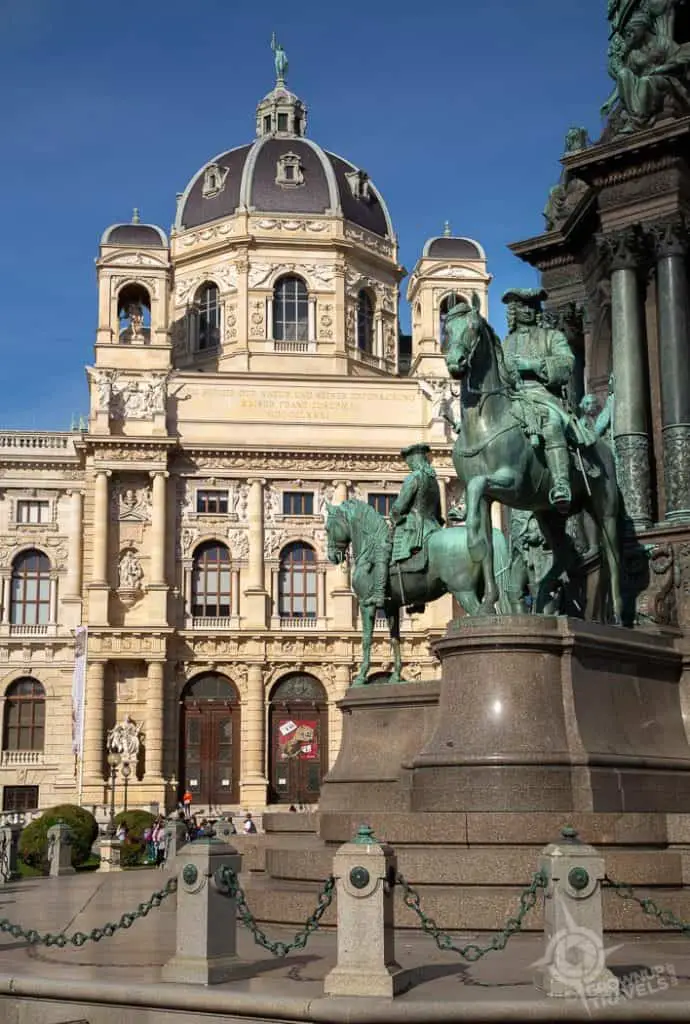
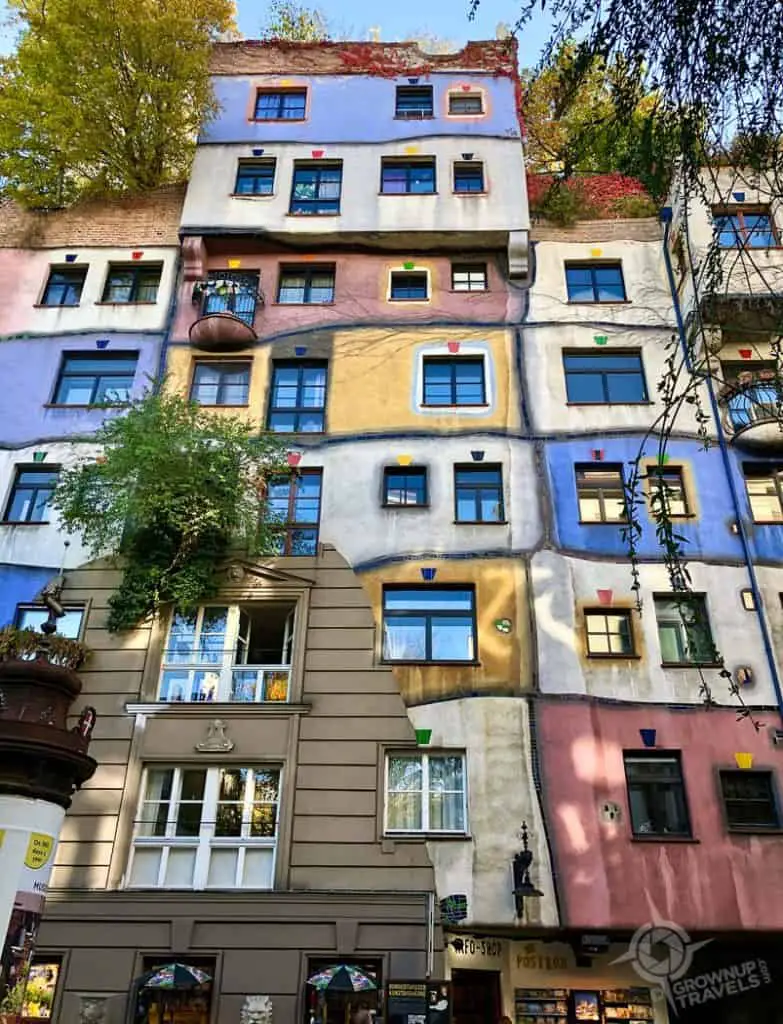
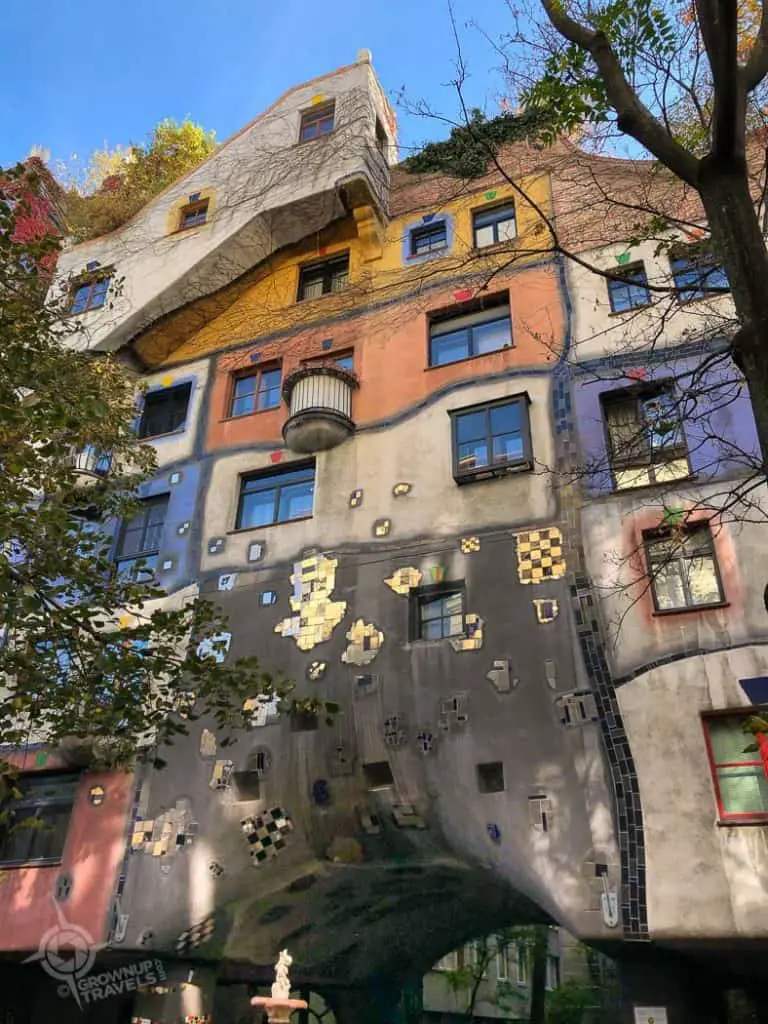
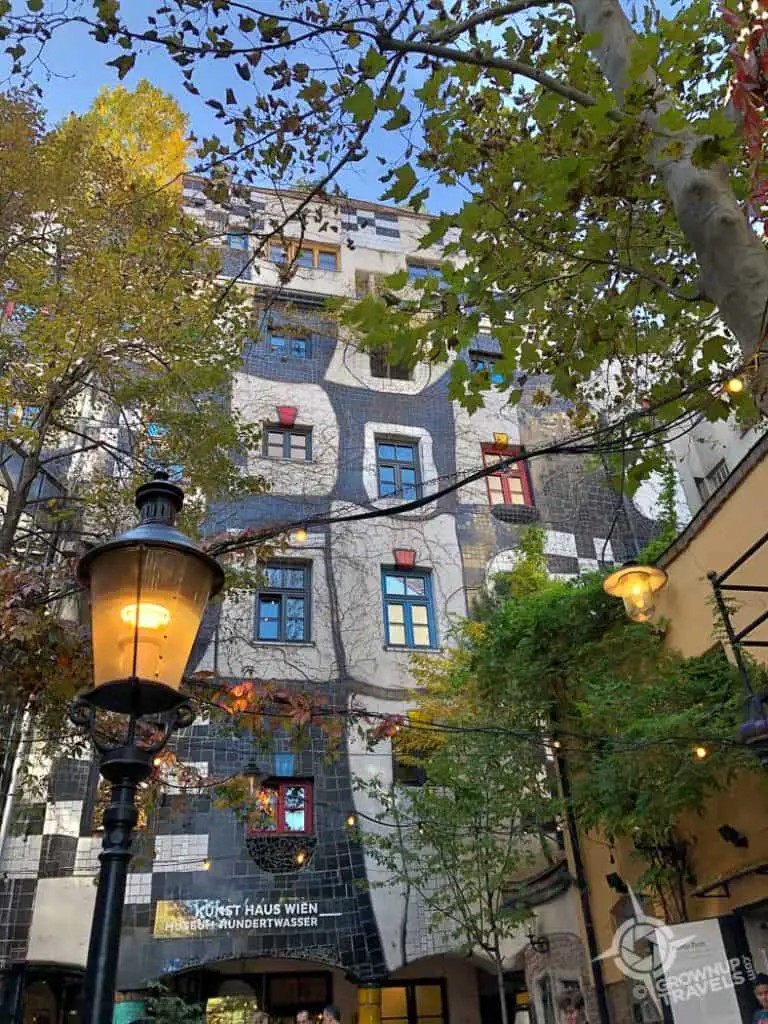
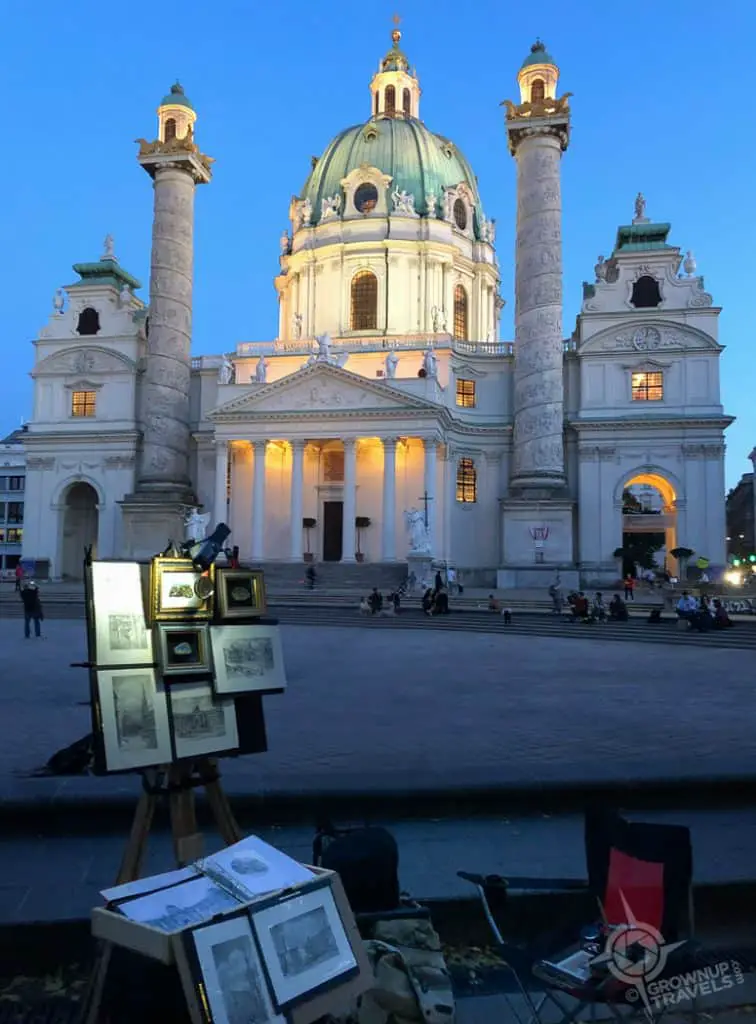
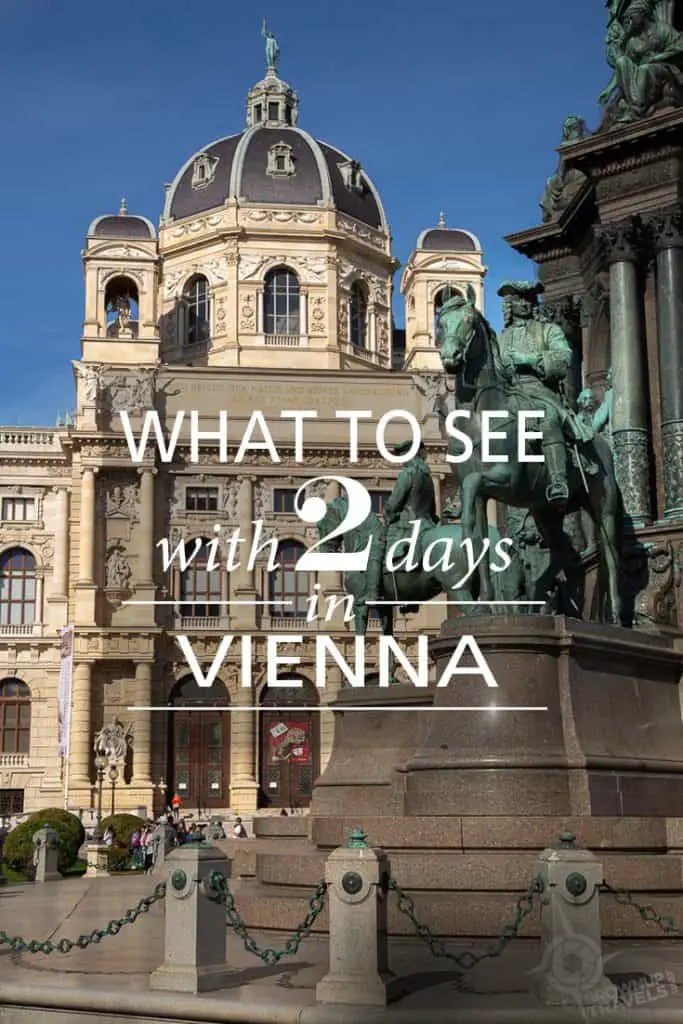

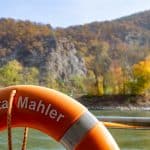
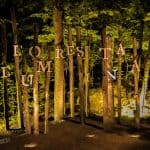
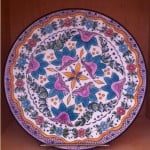
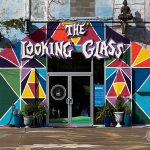






great photos! do you happen to remember where the building is you took the photo of the statue with the folded arms and looking down by chance?
Sorry, I am not sure which photo you mean exactly. Is it one from this article?
hi, sorry I was referring to the one on the second page of the Vienna, Austria photo gallery here: https://www.grownuptravels.com/vienna-photo-gallery/ !
Gotcha. Okay, so that figure was one of a pair on the portico to a building not far from St. Stephen’s Cathedral (about 2 1/2 blocks away heading towards the canal). The actual address is 19 Rotenturmstrasse. (Thank goodness for GPS coordinates on modern cameras!)
It looks like the building houses some kind of medical college, maybe for the university…?
very helpful, thanks so much for your reply! 🙂
I love how you compacted so much sight-seeing in only two days. I enjoyed your comparisons of the two palaces–how can you see just one? I know I’ll have to see both. Hundertwasser’s architecture reminds me a bit of Gaudi’s in Barcelona. Thanks for a lovely, informative post about a short but comprehensive visit to Vienna.
You really covered a lot of ground. We had to pass up Vienna for lack of time. Thanks for this guide, and love the Klimt work.
Ah Vien! I haven’t been there for many years, but I need to go back.
That was my situation, too: I had only visited Vienna once, thirty years ago! So it was great to go back and see it through fresh (albeit older!) eyes!
We recently spent a week in Vienna and l was really surprised that we barely scratched the surface and the city rocketed to one of the top places of my visited cities. I really loved it there. So glad you saw quite a bit in a jam packed two days. I look forward to going back even though l am not a big fan of Sacher Tort. :-), my husband is though so it evens out. I found plenty to eat.
Haha! Funny about Sacher Tort – I guess it’s not for everyone, and I wasn’t sure I’d like the apricot filling, but I did. Glad you enjoyed Vienna more than the cake! 😉
We were just in Vienna for three days two weeks ago and there was so much to see and do in the city that our days sped past — and we did little of what appears on your list. Glad you had as good a time as we did!
Glad you had a great visit too – I don’t think I’ve heard of anyone who hasn’t really enjoyed Vienna!
Beautiful, interesting,educational and somewhere I’d love to see
What a great Vienna itinerary! You’ve covered everything I’d like to see plus a couple of places that are new to me that look fascinating as well!
There is always more I’d have loved to have seen or done, but I do feel we got more of a sense of Vienna this time than on my first visit which was too short.
Wow, you surely managed to pack in a lot in just two days. Vienna could definitely support two weeks. I’m glad you mentioned both the Sacher Tort and the Hundertwasser, which were my favorite things about Vienna…along with the Wienerschnitzel.
We did manage to see a lot, but like you said, so much else that we could have done. Wienerschnitzel being one of them!